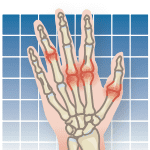The plain old cane doesnt get much attention in todays world of high-tech, cutting-edge medicine. Yet research shows that this simple device has multiple benefits, from increasing mobility and independence to possibly slowing the progression of osteoarthritis (OA). Consider, for example, the findings of a study published in the May 15, 2008 issue of Arthritis & Rheumatism, which compared how 20 people with medial-knee OA walked using a cane to how they walked unaided. Findings showed that the use of a cane resulted in a 10 percent decrease in knee adduction (knock knee), thereby reducing loads placed on the knee and potentially reducing the risk of OA progression. A cane can help in a variety of ways. People who suffer from arthritis in their knees or hips often find a cane can ease the pain they feel when walking. Those who feel unsteady on their feet often find that a cane helps them feel more sure of themselves. Post-operative patients, those recovering from an injury, even people with acute pain stemming from gout can benefit from using a cane, too. With each step, the support of a cane can decrease by a third, or even by as much as half, the amount of pressure that is transmitted to your knee or hip joint.
To continue reading this article or issue you must be a paid subscriber.
Sign in






























